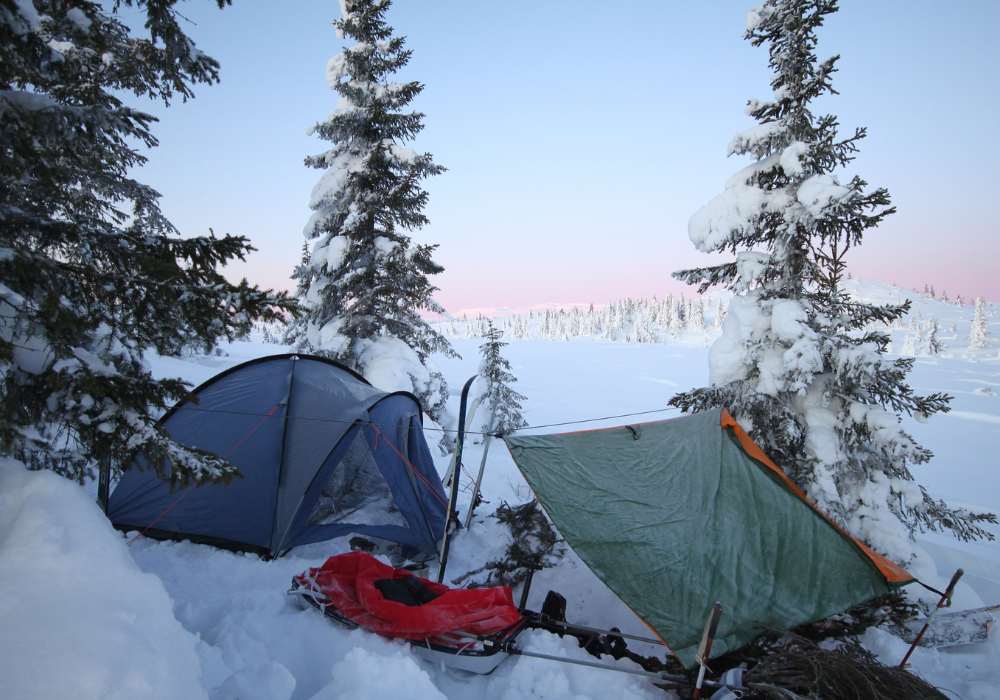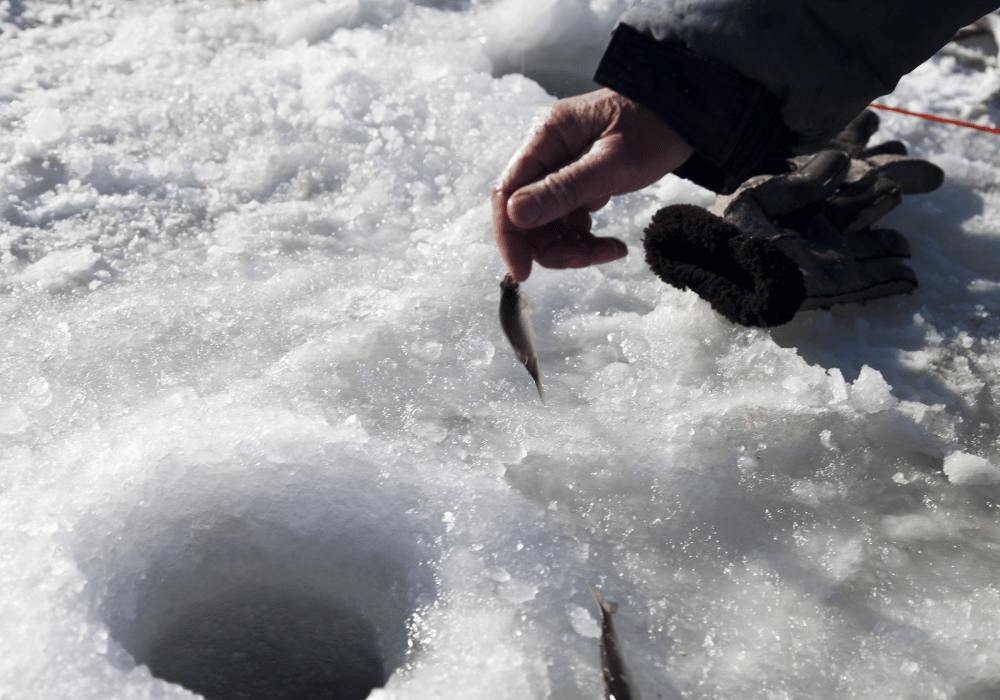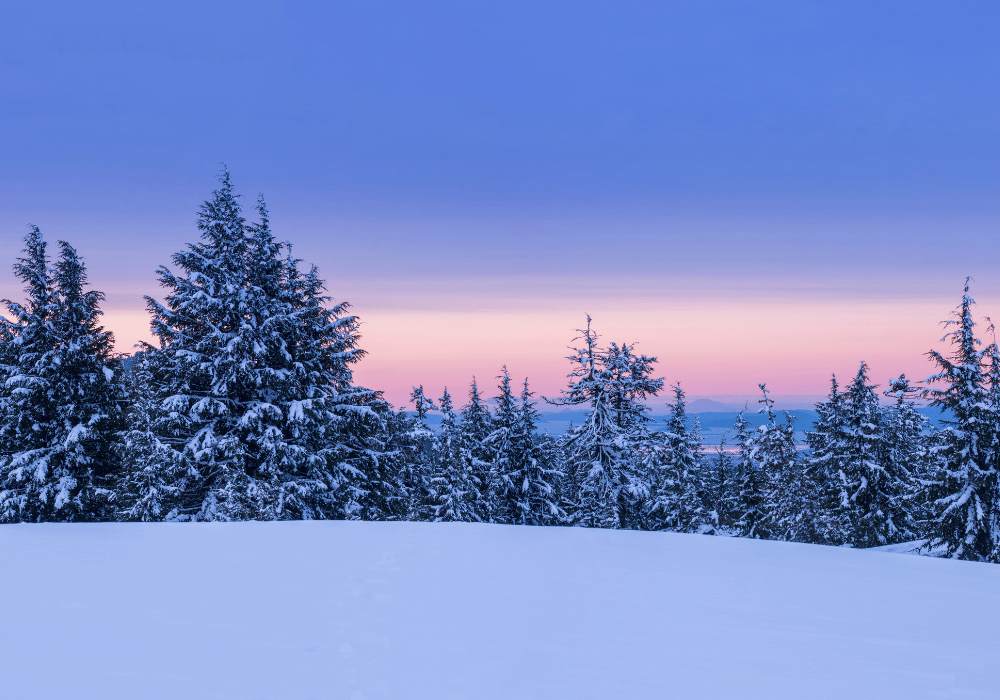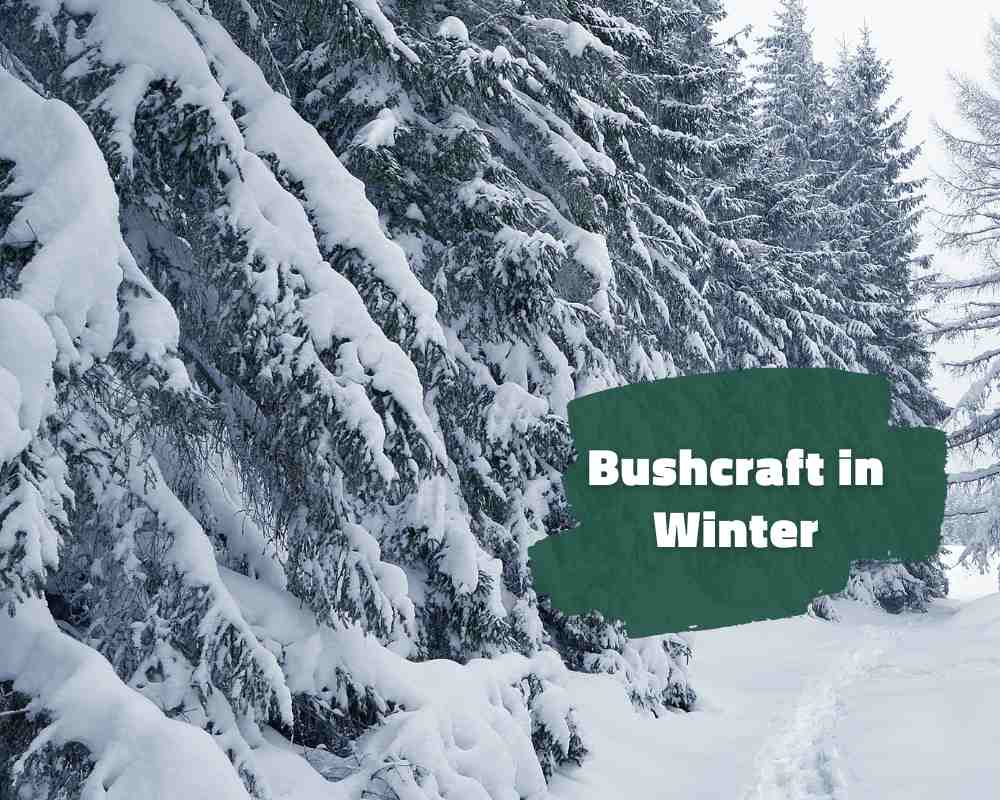Bushcrafting is a way of life that relies on knowledge of nature, outdoor skills, and self-sufficiency. While many people associate bushcrafting with the warmer months, it is also possible to practice it in winter.
In this guide, you’ll get to know the different challenges and opportunities that winter bushcrafting presents. Along the way, you’ll master some essential tips and tricks for bushcrafting safely in the winter months.
Clothing
Winter bushcrafting presents a major obstacle: cold weather. You need to undertake extensive preparation and meticulous planning to avoid hazards such as frostbite and hypothermia. You also need the right clothing and kit to stay warm. We recommend dressing in layers: Start with a base layer that wicks away moisture, then wear an insulating layer, then finish with an outer layer (e.g. a jacket) that’s windproof and waterproof. Wearing a hat is also necessary in winter to keep warm, since we lose a significant amount of heat through our heads. It’s also advisable to keep your extremities warm by wearing warm socks, gloves or mittens, and insulated boots.

Shelter
Given that wind, snow, and rain are common in winter, you should also have a quality, well-built shelter that can protect you. Wind can cause rapid heat loss from your body, while snow and rain can quickly get your clothing and gear wet, which will reduce their insulating properties and render you more vulnerable to the cold. A quality, well-built shelter can help avoid all that—it will trap heat, keep you dry, and protect you from the wind, snow, and rain, providing a safe and comfortable place to rest and recover.
Factors to consider for your winter shelter are as follows. If you’re building a shelter yourself, you’ll need to use a different technique compared to in summer, as you’ll need more insulation. For instance, you can construct a snow wall to block the wind. Conversely, if you’re camping in a tent, you’ll need to make sure you bring a four-season tent and a snow shovel for clearing a spot. Whichever type of shelter you’re in, you’ll also need sleeping bags and pads with higher insulation ratings! As well as that, you could bring a moving blanket, hand warmers, or a hot water bottle to slot inside your sleeping bag.

Food and Water
Finding water and food can be a challenge when bushcrafting in the winter. Firstly, the freezing temperatures can make it difficult to find sources of water that aren’t frozen. Melting snow for water can also be tricky, as it requires a source of heat and fuel. Secondly, many animals and plants go into hibernation or become scarce during the winter, which reduces the availability of potential food. Thirdly, it may be more challenging to hunt or fish during the winter due to harsh weather. As a result, it is absolutely essential that you learn about how to find and purify water in winter, and how best to identify and prepare food in winter.
Here are some tips and tricks for finding food in the winter. First, you can learn techniques to identify and harvest edible plants that stay alive in the winter—they do exist! Next, you can be aware of techniques for hunting for and trapping animals in the winter; snowy conditions can be very useful, for instance, as non-white animals will stand out more against a snowy backdrop, and you might even be able to see some animals’ tracks in the snow. Another tip is to learn ice fishing if you’re interested in that—it helps you catch fish that might not even be available outside the winter months!
Tip: The chances are that you’ll need to make a fire to cook any food you catch, or you might need to melt some snow for water. Starting a fire in the winter presents new challenges, as the wood you collect can be wet and the surrounding snow might make lighting a fire more difficult. Thus, it’s vital that you master some techniques for starting a fire in wet, wintry conditions. You don’t want to end up hungry, thirsty, and cold!

Navigation
Navigating through the wilderness can also be challenging in winter for several reasons. Snow can obscure familiar landmarks and make it difficult to navigate using visual cues. What’s more, frozen waterways—such as rivers and lakes—can make journeys more dangerous. Winter weather can also change rapidly, making it more difficult to plan and execute a safe route. Lastly, the shorter days and longer nights in winter can reduce visibility and make it harder to journey safely. As a result, you must have strong navigational skills and know how to navigate unexpected winter weather and terrain.
Unique Experiences
Although winter bushcrafting has its challenges, there are some unique benefits to it, too; it can offer new experiences that may not be available during other seasons of the year. For example, some wildlife species are more visible in the winter, as they are less shy and come out of hiding to search for food. In colder regions, you might have the opportunity to see animals such as moose, elk, or deer! They are all more active during the winter.

Additionally, winter landscapes can be breathtakingly beautiful, with snow and ice creating a magical winter wonderland. In such regions, you might be able to participate in snowshoeing or other cross-country activities, which are uniquely memorable experiences. Furthermore, winter can offer a quieter and more peaceful outdoor experience compared to other seasons of the year, given that fewer people venture into the wilderness during the colder months. This offers you a chance to connect with nature in a new and meaningful way.
In conclusion, the answer to the title question is yes: bushcrating is certainly possible in the winter! It requires extensive preparation and new kinds of equipment, which gives you the chance to learn new skills and techniques specific to the season. It’s also worth it as you get to witness breathtaking winter landscapes and connect with nature in a new way. As long as you have the right kit and knowledge, winter bushcrafting can be a very safe and rewarding means of experiencing and exploring the wilderness. It’s time for you to give it a try!
I am Bruno. Navigating the urban rush by day, I find peace under the stars by night. Alongside my loyal companion and co-adventurer Lilith, we explore the balance between city life and nature’s embrace. Through writing and films, I delve into bushcraft and the wild’s allure.
GointheWilderness is my bridge between these two realms, guiding you to reconnect with your innate wilderness.
Eden is here and now; join us in rediscovering it.

